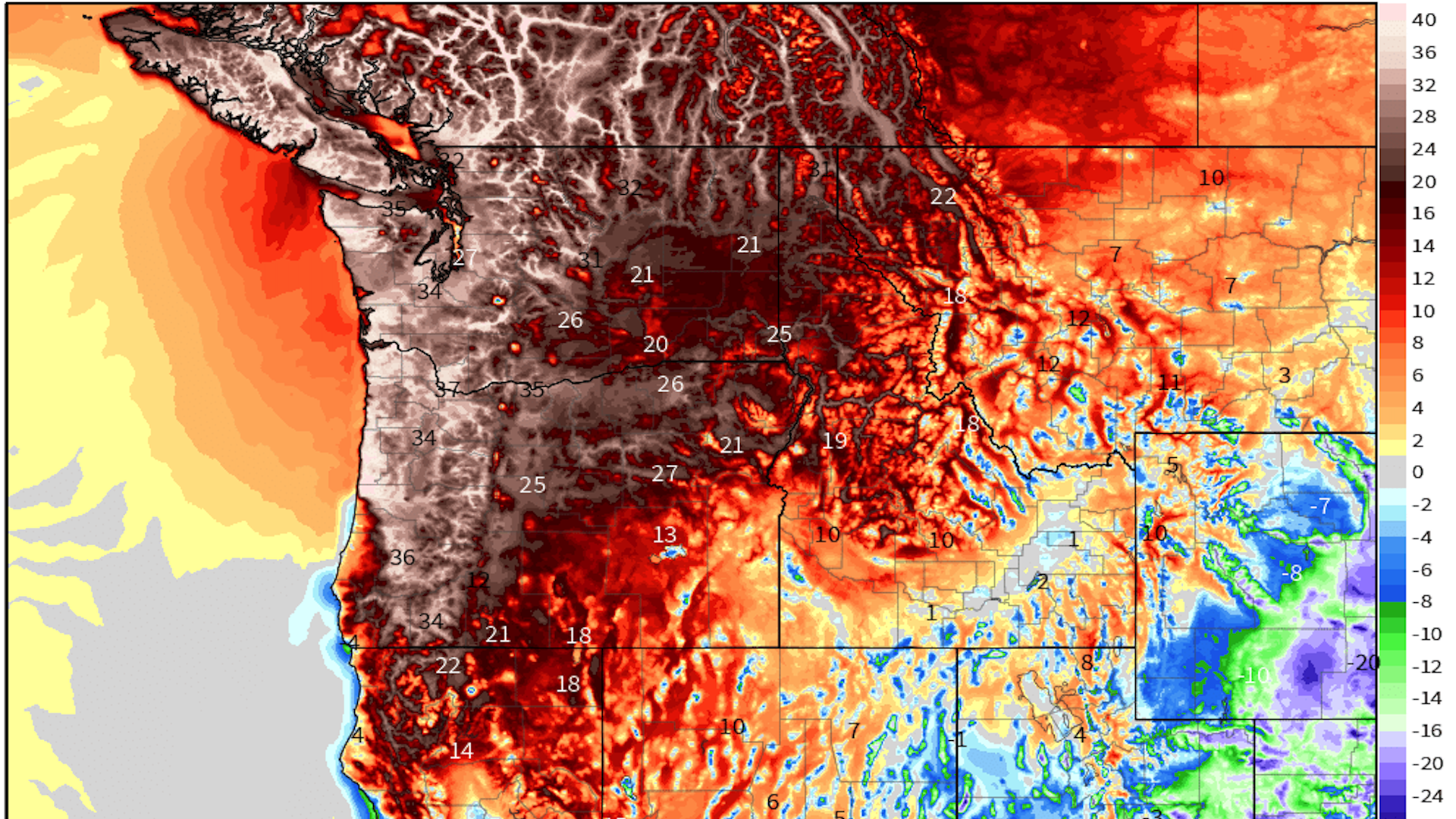
Pacific Northwest heat wave reaches astonishing peak on Monday
"The extraordinary heat wave that's stifling the Pacific Northwest reached its peak in many areas on Monday. Seattle smashed its all-time high-temperature record, set just the day before, by 4°F.
_____________________________________________________________________________
BIG WHOOP! In Arizona it's sometimes 5-10 or 15 degrees hotter than 'normal'
_____________________________________________________________________________
Why it matters: After two days of oppressive heat and little relief at night, the extreme weather event, boosted by global warming, is moving into a more dangerous phase.
- Heat illness tends to spike the longer heat waves last, and extreme heat is the No. 1 weather-related killer each year in the U.S.
Driving the news: A highly unusual weather pattern that statistically has less than a 1-in-several-thousand-year chance of occurring is in place over the Pacific Northwest, with a record-strong high-pressure area aloft — colloquially known as a "heat dome" — sitting over Washington state and British Columbia.
- This heat dome is yielding temperatures 25–50°F above average across multiple states and British Columbia.
- This heat, combined with a worsening drought, is raising the risk of wildfires across multiple Western states, with some large blazes erupting in California Sunday and Monday.
- It is also causing power demand to spike at a time when hydropower resources are lower than usual.
- The heat was so severe Monday that pavement buckled across the Seattle and Portland metro areas.
By the numbers: All of Oregon, Washington and Idaho, plus portions of California, Montana and Nevada, are under excessive heat watches and warnings.
- Portland, Oregon, set an all-time high temperature of 112°F on Sunday, and eclipsed that on Monday, with a high of 115°F.
- In Seattle, the temperature reached 104°F on Sunday, which broke the existing all-time record. It exceeded this on Monday, reaching 108°F.
- Before this weekend, Seattle had never had back-to-back 100-degree days, and only saw three such days on record. But now, the century mark was exceeded three days in a row.
- A preliminary state record of 118°F was tied in Dallesport, Washington.
- Canada is also seeing extreme heat, with the country's June high-temperature record tied on Saturday and smashed on Sunday at Lytton in British Columbia by nearly 3°F, with a high of 116°F. This was broken again Monday, with the same location recording 117.5°F.
Of note: To put this into perspective, this means that a location in British Columbia, not known as an extremely hot province in June, equaled Las Vegas' all-time hottest temperature.
- Mountain areas in the Northwest have been extremely warm with freezing levels located above the peak of Mount Rainier at times. This is resulting in rapidly melting snow and ice, from the peaks of Oregon to the mountains of British Columbia.
How it works: There are three main reasons the Pacific Northwest is so hot. The first is tied to the heat dome itself, which causes air to sink, or compress, warming as it does so and keeping skies clear. The second has to do with the location of the heat dome.
- The feature is parked to the north-northeast of the region, at the same time as an upper-level low-pressure area lurks offshore.
- Due to the clockwise flow of air around the high pressure, easterly winds are blowing from high-to-low elevation areas, adding even more compressional cooling.
The third fact is climate change. Studies have shown that severe heat events such as this one are now on average about 3–5°F hotter than they would be without the many decades of emissions of greenhouse gases from fossil fuel burning, deforestation and other human activities.
- However, this understates climate change's influence, researchers told Axios, as warming is also thought to be altering weather patterns in a way that makes strong heat domes more common and prolonged.
- Climate scientists warn that this event demonstrates how climate change plus natural weather variability are pushing society beyond our ability to cope.
What they're saying: "We have made trillions of small adaptations to optimize our society for the historical range of temperature, precipitation, etc., that we have experienced," Andrew Dessler, a climate researcher at Texas A&M University, told Axios via email.
- "As the climate changes, that range is no longer the relevant one, and the mismatch between what we are adapted for and what we actually experience can generate huge negative impacts that seem to suddenly appear out of nowhere — even though we've been predicting them for literally decades," he said.


No comments:
Post a Comment